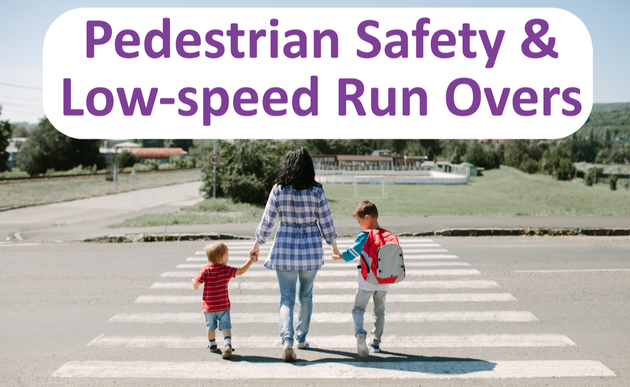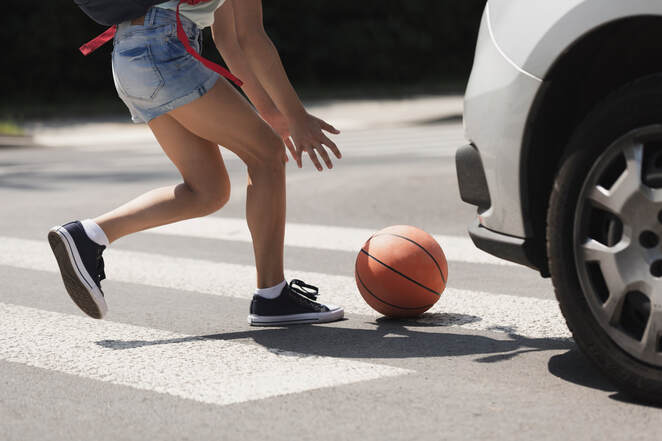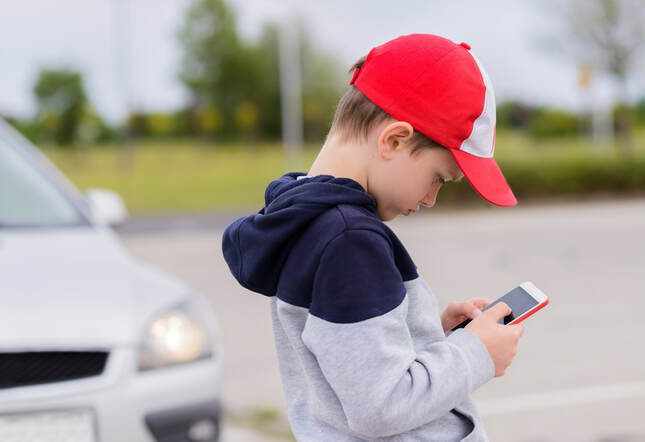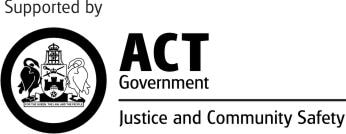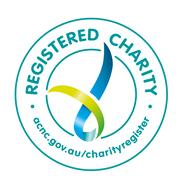Children are at risk of serious injury from car and pedestrian accidents. These accidents are the leading cause of death and the second leading cause of injury to children over 5 years of age. It's important to have a save place away from vehicles for kids to play, that they are supervised at all times when around vehicles and that they're taught the skills they need to be safe pedestrians.
PEDESTRIAN SAFETY
All Ages
Talk to kids and teens about road signs, traffic lights and safe places to cross. Explain words such as “fast”, “slow”, “near”, “far” and teach them road signs, road rules and practice every time you walk or ride. It's important to teach them not to run after balls or toys without checking the road for vehicles first.
Talk to kids and teens about road signs, traffic lights and safe places to cross. Explain words such as “fast”, “slow”, “near”, “far” and teach them road signs, road rules and practice every time you walk or ride. It's important to teach them not to run after balls or toys without checking the road for vehicles first.
Teach all kids to:
Children under 10 years of age need to be supervised at all times near traffic. Adults around them can help model safe behaviour and teach them the skills they need to be safe pedestrians.
Hold your child’s hand when crossing the road and where possible only cross at pedestrian crossings and traffic lights.
10 to 13 years of age
Children can cope more safely in traffic on their own by the ages of 10 to 13 years of age. However the busier the roads they're crossing, the older they should be. Plan safe routes and practice them together, especially for walks to school and other places visited regularly. Make sure your child wears light or brightly coloured clothing that is easy for drivers to see.
13+ years of age
Children 13+ years of age should be ready to cope with traffic on their own, ensure they are aware of the road rules, road signs and any changes to these.
- STOP at the kerb
- LOOK, both ways, for traffic
- LISTEN for traffic
- THINK, decide whether it's safe to cross
Children under 10 years of age need to be supervised at all times near traffic. Adults around them can help model safe behaviour and teach them the skills they need to be safe pedestrians.
Hold your child’s hand when crossing the road and where possible only cross at pedestrian crossings and traffic lights.
10 to 13 years of age
Children can cope more safely in traffic on their own by the ages of 10 to 13 years of age. However the busier the roads they're crossing, the older they should be. Plan safe routes and practice them together, especially for walks to school and other places visited regularly. Make sure your child wears light or brightly coloured clothing that is easy for drivers to see.
13+ years of age
Children 13+ years of age should be ready to cope with traffic on their own, ensure they are aware of the road rules, road signs and any changes to these.
It's important to take into account each child's skills and development and ensure you've gone through the road rules, traffic signs and general pedestrian safety before you let them walk or ride by themselves.
Phones and Devices
It’s important to teach kids and teens not to use phones or other devices when they are crossing or are near a road. It is important that their full attention is on the road and crossing safely. If music is being played or devices are being used they may not notice a car, bike or tram in time or be tempted to look down at the device while they are crossing the road.
It’s important to teach kids and teens not to use phones or other devices when they are crossing or are near a road. It is important that their full attention is on the road and crossing safely. If music is being played or devices are being used they may not notice a car, bike or tram in time or be tempted to look down at the device while they are crossing the road.
Trams
Always look both ways before crossing tram lines, cross at the designated crossing zones and follow the light signals. Watch out for pram and bicycle wheels getting caught in the tram tracks - riding directly across the tracks at a right angle can help avoid getting wheels stuck in the grooves.
Always look both ways before crossing tram lines, cross at the designated crossing zones and follow the light signals. Watch out for pram and bicycle wheels getting caught in the tram tracks - riding directly across the tracks at a right angle can help avoid getting wheels stuck in the grooves.
Driveways and Carparks
Most cars have a "blind space" behind them of more than 15 metres! It can be impossible to see small children from inside a vehicle, especially when they are directly behind it.
Always check around the outside of your vehicle, including behind the wheels, before driving and it's important to know where kids are whenever a vehicle is being moved, especially in or out of driveways. Children should be either:
Reversing cameras are a good extra safety feature but they do not replace the need for adult supervision and knowing where children are at all times.
Most cars have a "blind space" behind them of more than 15 metres! It can be impossible to see small children from inside a vehicle, especially when they are directly behind it.
Always check around the outside of your vehicle, including behind the wheels, before driving and it's important to know where kids are whenever a vehicle is being moved, especially in or out of driveways. Children should be either:
- Inside the vehicle in their car seat or seat belt
- Inside the home with adult supervision
- Being held by an adult
- Holding the hand of an adult
Reversing cameras are a good extra safety feature but they do not replace the need for adult supervision and knowing where children are at all times.

